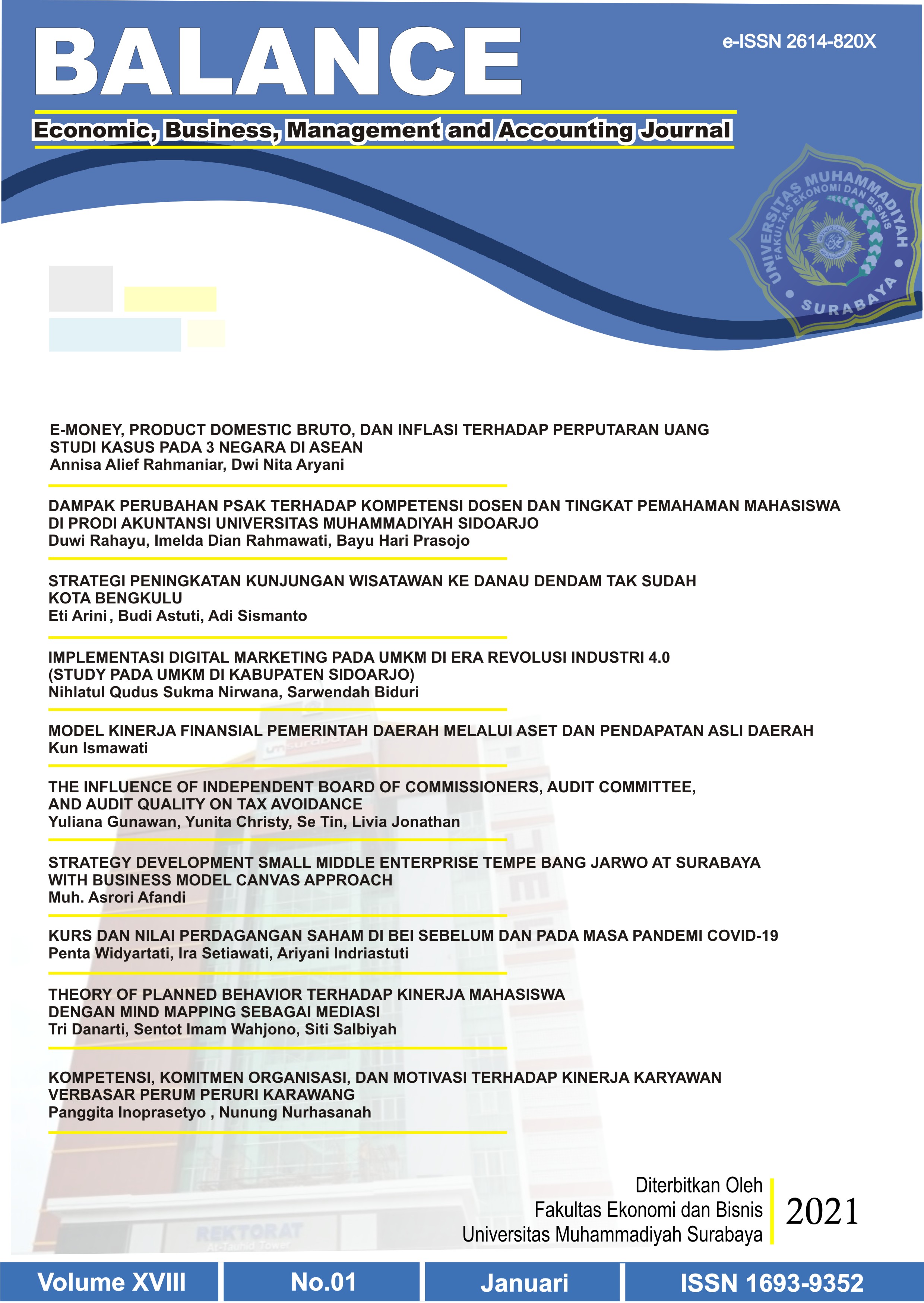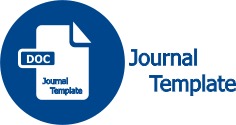E-Money, Product Domestic Bruto, dan Inflasi Terhadap Perputaran Uang Studi Kasus Pada 3 Negara di ASEAN
Abstrak
ABSTRACTÂ
Â
The circulation of money in a country is influenced by several factors, namely e-money, GDP and inflation. The increased use of e-money should be able to increase the circulation of money so that GDP increases and suppresses inflation. The purpose of this research is to determine the effect of electronic money (e-money), Gross Domestic Product (GDP) and inflation on velocity of money in 3 countries in ASEAN using a quantitative descriptive approach. The data analysis technique used is Multiple Linear Regression and using Eviews 9, the population of this study was 324 financial reports from the three countries in ASEAN consisting of Indonesia, Singapore and Malaysia. The results of this study are that e-money, GDP and inflation have a significant effect on the circulation of money in the three countries in ASEAN.
Â
Keywords                   : E-money; Gross Domestic Product; Inflation; Velocity of money
Correspondence to       : annisarahma17@gmail.com, dwinita@stie-mce.ac.id
Â
ABSTRAK
Perputaran uang di suatu negara dipengaruhi oleh beberapa faktor yaitu e-money, PDB dan inflasi. Meningkatnya penggunaan e-money seharusnya dapat meningkatkan perputaran uang sehingga PDB meningkat dan menekan adanya inflasi. Tujuan penelitan ini adalah mengetahui pengaruh uang elektronik (e-money), Product Domestic Bruto (PDB) dan inflasi terhadap perputaran uang (velocity of money) pada 3 negara di ASEAN dengan menggunakan pendekatan deskriptif kuantitatif. Teknik analisis data yang digunakan Regresi Linear Berganda dan menggunakan Eviews 9, populasi penelitian ini yaitu 324 laporan keuangan dari ketiga negara di ASEAN yang terdiri dari Indonesia, Singapura dan Malaysia. Hasil penelitian ini adalah e-money, PDB dan inflasi memiliki pengaruh signifikan terhadap perputaran uang pada ketiga negara di ASEAN.
Kata Kunci                 : Uang elektronik; PDB; Inflasi; Perputaran uang
Referensi
Adiyanti, A. I. (2015). Menggunakan Layanan E-Money. 13, 1–13. https://jimfeb.ub.ac.id/index.php/jimfeb/article/view/1590
Altayee, Hatem Hataef Abdulkadhim dan Mustafa Hassan Mohammad Adam, P. (2012). “Financial Development and the Velocity of Money Under Interst-Free Financing System: An Empirical Analysis. 66(8), 37–39.
Arifin, I. dan H. G. W. (2009). Membuka Cakrawala Ekonomi. Grafindo. https://doi.org/10.1007/s00268-015-3150-1
Bambang, P. (2006). Dampak Pembayaran Non Tunai Terhadap Perekonomian dan Kebijakkan Moneter. Bank Indonesia.
Djamaluddin, S., Hidayanto, A. N., & Wardhani, S. (2016). Perception of beneficiaries towards adoption of e-money in the distribution of social assistance in Indonesia. Economic Journal of Emerging Markets, 8(1), 13–24.https://doi.org/10.20885/ejem.vol8.iss1.art2
Ghozali, I. (2013). Aplikasi Analisis Multivariate dengan Program IBM SPSS 21 Update PLS Regresi. Badan Penerbit Universitas Diponegoro.
Griffin, R. W. and R. J. E. (2008). Bisnis. Erlangga.
Henry, A. M. (2017). Effect Electronic Money on Velocity in Kenya.
Kartika, V. T., & Nugroho, A. B. (2015). Analysis on Electronic Money Transactions on Velocity on Money in ASEAN-5 Countries. Journal of Business and Management, 4(9), 1008–1020.
Khan, R. E. A., & Gill, A. R. (2010). Determinants of Inflation: A Case of Pakistan (1970-2007). Journal of Economics, 1(1), 45–51. https://doi.org/10.1080/09765239.2010.11884923
Kholishoh, M. N. (2016). Analisis Ekonomi Percepatan Perputaran Uang di Indonesia‖, Skripsi, Universitas Lampung, Lampung.
McEachern, W. A. A., & Triandanu, S. (2000). Ekonomi Makro: Pendekatan Kontemporer. Salemba Empat.
Meryani. (2017). Analisis Determinan Velocity of Money di ASEAN.
Mishkin, F. S. (2009). Ekonomi Uang, Perbankan, dan Pasar Keuangan buku 1 (8th ed.). Salemba Empat.
Sugiyono. (2012). Metode Penelitian Bisnis. Alfabeta.
Sukirno, S. (2004). Pengantar Teori Makroekonomi. PT Raja Grafindo Persada.
Sukwiaty, dkk. (2009). Pengertian Ilmu Ekonomi. PT.RINEKA CIPTA.
Syrotian, R. (2012). VELOCITY OF MONEY: DETERMINANTS IN UKRAINE by. VELOCITY OF MONEY: DETERMINANTS IN UKRAINE By, 1–37.















